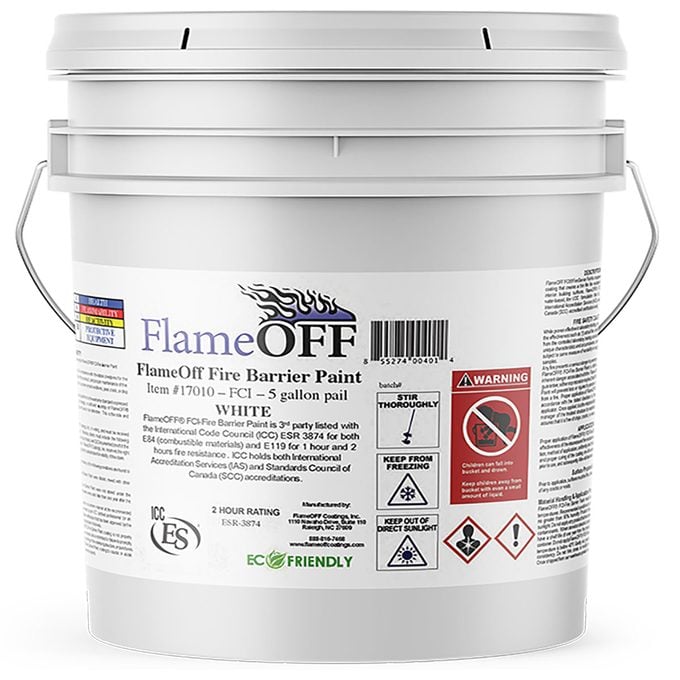Fire retardant coatings can save lives when used properly. Learn about effective fire-resistant solutions, benefits, and application of spray-on fire retardants.
What Is Fire Retardant Coating?
On This Page
What is fire retardant coating?
Fire retardant coatings (or spray) are non-combustable chemicals applied in residential, commercial, and industrial buildings for the following reasons:
- Stop the spread of a fire
- Slow the spread of a fire
- Reduce a fire’s intensity
- Reduce the smoke a fire produces
Fire Retardants Save Lives
According to FEMA, “An estimated 6,500 single to twin-family residential buildings basement fires were reported to fire departments within the United States each year and caused an estimated 65 deaths, 400 injuries and $278 million in property loss.”
Those are startling numbers. Creating a barrier between the basement and the upper floors with a fire retardant coating can drastically reduce all of those stats. We talked with a building official and fire retardant coating manufacturers to find out how, why and when you should be using fire retardant coatings.
Are fire retardant coatings required?
Fire retardant coatings are required during the construction of a new home if the floor assembly is built with wood I-joists. Fire coatings are part of the IRC Code R501.3. Because of their thin plywood webbing, when I-Joists catch fire they can lose their integrity at a dangerously fast rate. By applying a chemical fire retardant, that rate is slowed, giving occupants in the home more time to evacuate and emergency responders more time to enter the building and put out the fire before the flooring structure collapses. Not all municipalities accept new building codes at the same rate, or ever for that matter. Check with your local building official to find out what the exact code requirements are for your area.
When are fire retardant coatings not required?
You are not required to apply fire retardant coating if:
- Existing homes
- Remodel projects
- The area is less than 80 square feet, like in mechanical/utility rooms
- A sprinkler system is installed
- The floor assembly (joists) is built with dimensional lumber: 2×10, 2×12, etc.
- Finished basement ceilings where the bottom of the I-joists are finished/covered with ½-in. gypsum or 5/8-in. plywood paneling
- Check your local code for other exceptions
When should fire retardant coatings be applied?
The best time to apply fire coating would be right after the framing is complete and before the mechanicals are being installed. This time frame allows for easy access to all the areas that need to be coated.
Is there different types of fire retardant coatings?
Fire retardant coatings are available in three different formulas:
- Oil based
- Two-part mixes
- Epoxy solvent-base
- Water based
All approved formulas have a minimum Class A rating (1-2 hour flame spread). These coatings can be applied to steel, gypsum, and wood. Some can also be applied to foam and plastics.Water based products are typically easer to clean up after.
How are fire retardant coatings applied?
Most coatings are sprayed on with a standard paint sprayer. An extension on your paint gun makes it easy to apply the product from a distance, and a rotating tip will help you get in any tight, hard-to-reach areas. A brush can be used for small areas and touch up.
Depending on where you are located you can usually apply fire retardant coatings on your own, but check with your local building official to make sure that you don’t need to be certified installer. Also, be aware that some manufacturers themselves require that you are a certified installer, so check with them as well.
What do fire retardant coatings cost?
An oil base or water base product costs about $.75 per square foot. Hiring a certified installer will cost about $1.50 per square foot.





















